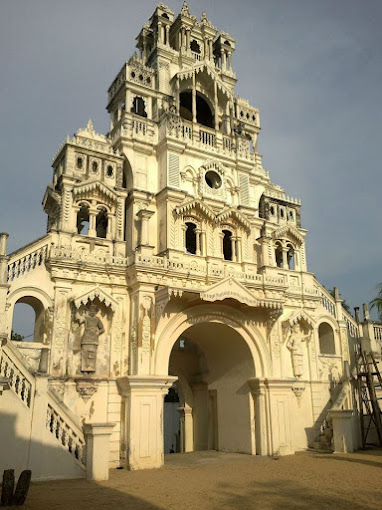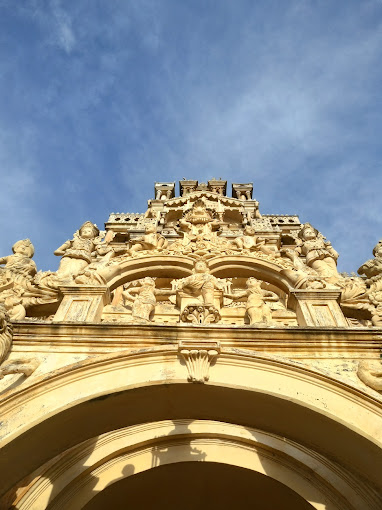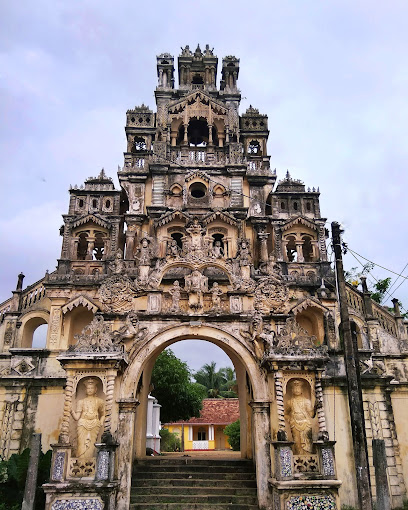- Area: Sri Lanka
- Type: Attractions
- Group: 18th century BCE Buddhism Vihara
Sunandarama Maha Vihara, also known as Maha pansala is located in the southern part of Sri Lanka. It is situated 65 kilometers north of Colombo, 36 kilometers south of Galle, and 200 meters east of Ambalangoda railway station. This sacred place holds a land of nearly 5 acres. Traditionally this “Vihara” belongs to “Vilegoda”, “Nambimulla”, “Maha Ambalangoda” and “Paniyanduwa” which are known as “Sathara Peru” (the four states which are benefited by the Vihara). Since the early days, these states have been provided the support to maintain the Vihara. Early before this place became a vicar, it was known that “Ganninanselaya” stayed here.
Sunandarama Vihara has been interred in two stories which are known as “Maluwa”. The sermon hall, (“Dharmashalawa”), monastery (“Awasa”), saīmaāgaeya and alms hall (“Dhana shalawa”) are situated in the lower tier while the “Vihara”, “Sacred Bodhi” and “Statue house” are located on the upper. The Sacred Bodhi is a shrine in this Vihara.
History
The temple dates back to the 18th century BCE. In 1750, the “Bodhi” was planted according to a belief. At that time this temple was a residence for nuns. But “Sunandarama Maha Vihara” systematically started in 1970. Vilegoda Punnasara thero’s moving from Aluthwala Nanadarama shrine was the starting of Sunandarama Vihara shrine. Vilegoda Punnasara thero had eleven clerical students.
The statue house is the most ancient building which belongs to the “Kandyan” era. According to artist Manju Sri, the main stone door frame and the right-hand side door frame of the statue house was created by Thotagamu temple artists. It seems that the present statue is older than the statue house created in 1803.
The recumbent statue and the standing statue included in the hall’s walls and the ceiling was created by P.N Jakolis who lived in Galle and his two assistant artists. The Bell shaped cairn was created in 1843. The synagogue was built in 1846 and two storied building was constructed in 1893. The small statue house on the second floor was built in 1886; a marble Buddha statue is placed in that hall as a gift from Burma.






Frescoes (Murals)
The artistic murals in the Sunandharama Vihara are notable examples of ancient Sri Lankan art and crafts. These frescoes are similar to the frescoes at “Thotagamu Vihara”, which were sketched by an artist from “Sathara Koralaya” (an area consisting of four states of the upcountry side of Sri Lanka) around 1805.
These frescoes portray sundry “Jathaka Stories” (the stories which portray previous birth stories of Buddha) like “Vessanthara”, “Sachchankira” and “Mandhathu” “jataka stories”, including the “Vessanthara Jathaka Story”. Even though hill country tradition is local to the hill country temples’ artwork the frescoes here belong to the hill country tradition. Red, brown, black, and blue are the main colors used in these murals.
Picturesque arch
The bell arch or the picturesque Pandal is the most significant creation of this “Vihara.” This is the only concrete arch with this amount of precise carvings in Sri Lanka and is 30 m high and 18 m wide.
Ancient security figures and “MakaraThorana” (a Pandal with a figure of a dragon) are carved for four stories. For every story, six security caves have been created. So this depicts a whole security squad for the “Vihara.”
A mechanical bell has been attached for the third floor and it weighs 250 kg. It works from a machine placed on the first floor. The sacred footprint of Buddha is carved on the fourth floor to enhance the dignity and respect towards Buddha.
The construction was begun in 1876 by Mr. Juanwanwadu Endoris De Silva. Various artists worked on this arch under his guidance. After the death of Endoris De Silva in 1895, his son took his place. However, the construction took over 40 years to be completed.
To hold the weight of the three-storied carvings, the base of the arch was constructed on a railway track with the help of the engineers of the railway service. According to the resources, the cost of the construction was borne by local residents.
By the time, the arch was dragged for deterioration, and a reconstruction committee was organized in 1988 with the help of local dignitaries. This was chaired by Mr. M.S. De Silva and Mr. P.E. Ariyasinghe was the secretary. Mr. Bernard Lokuge, Mr. Santhiyagu Upasiri, Mr. A.M. Karunarathne, Mr. A.M. Somapala De Silva, Mr. Bandu Wijesooriya, Mr. Sirisena Lokuge, Mr. Piyasena Peduruhewa, and Mr. J.B.S. De Silva were among the committee members. Since then, its conservation and reconstruction work has been maintained by the locals.
Gehenna
“Gehenna” also known as “hell” was another creation in the Vihara. It is situated on the eastern side of the temple complex. It is a large concrete creation with a basement “Lkumbu”(strong) hell and various tunnels there. Though its construction began in 1928, it has yet to see completed.
Bodhi
The sacred “Bodhi” here is known to be one of the eight branches (plants) from the sacred “Sri Maha Bodhi”. This “Bodhi” is believed to have been planted around 1750, well before the construction of the temple.
Conservation
Though the conservation of this temple complex was initiated in 1988 by the reconstruction committee for the “arch”, the locals are doing their best to conserve this piece of work for generations to come. Much of the deteriorating frescoes have been subjected to reconstruction.

